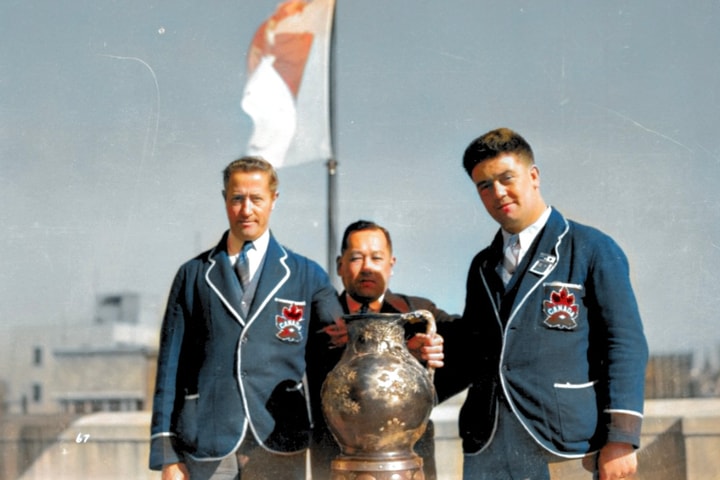According to a Shinjuku Business Directory 1953, IWATAYA, once a
ramshackle shop built out of the post-war ruins by Ishi Fukui and
run all on her own, successfully developed into a limited
partnership company. It is also recorded that their business was
established on August 20, 1947, represented jointly by Ishi and
Junichi with 12 employees, based at Kinokuniya Book Store, exactly
the same place where Ishi had thrown herself into her work after
the war to make ends meet.
Upon entering the 60s the streets of Tokyo were vibrant with
banners and posters of the forthcoming Tokyo Olympics 1964. Keeping
up with the burgeoning market for sporting goods businesses,
IWATAYA, one of the basement tenants of Kinokuniya Building,
responded proactively to various consumer needs. An account in
'Shinjuku 100 Shops' May 1964 issue introduces the shop as follows:
"IWATAYA boasts of a broad range of sporting goods. In the winter,
ski equipment is the main product, and in the spring, rugby and
hiking equipment are the main items. Particular emphasis is placed
on rugby equipment and sports shoes, and the shop is proud to have
a great selection of athletic footwear."
In the autumn of 2019, 97 years after IWATAYA was opened in
Kyoto, Ishi's humble contribution to Japanese rugby was unfolded by
the media and the featured story was well received by the Japanese
rugby community.
According to the online article posted by Kyoto Newspaper, Ishi
might have been the creator of the Japan international jersey with
three cherry blossom buds, which was first worn during Canada tour
in 1930. The writer introduced a testimony to Ishi's feat, citing
an interview with her grandson, Kenichi Takada, 70, i.e. son of
Junichi and Michiko.
Takada testifies; "I hear the first emblem of Japan jerseys was
designed by my grandmother. My grandmother started a business all
by herself. By nature, she was skillful at drawing and painting.
She also designed some university jerseys. She was close to head
coach of Meiji University RFC. While my mother was telling my
grandmother's story, I heard about the emblem of the Japan
jerseys."
According to the online article, Ishi enjoyed cigarettes and
whiskey all through life and passed away in May 1993, aged 101.
The name of Ishi Fukui and IWATAYA may not take centre stage in
the history of Japanese rugby. But it would be meaningful to
remember the legacy unassumingly left by a strong woman who lived
more than a century.
About the Author - Hideki Shoji is a
translator of electronic components at a local company in Tsuruoka,
Japan. He is a collector of rugby memorabilia and researcher on the
history of Japanese rugby. He plays wing/fullback at Harbor Blacks,
a local club in Sakata city.









